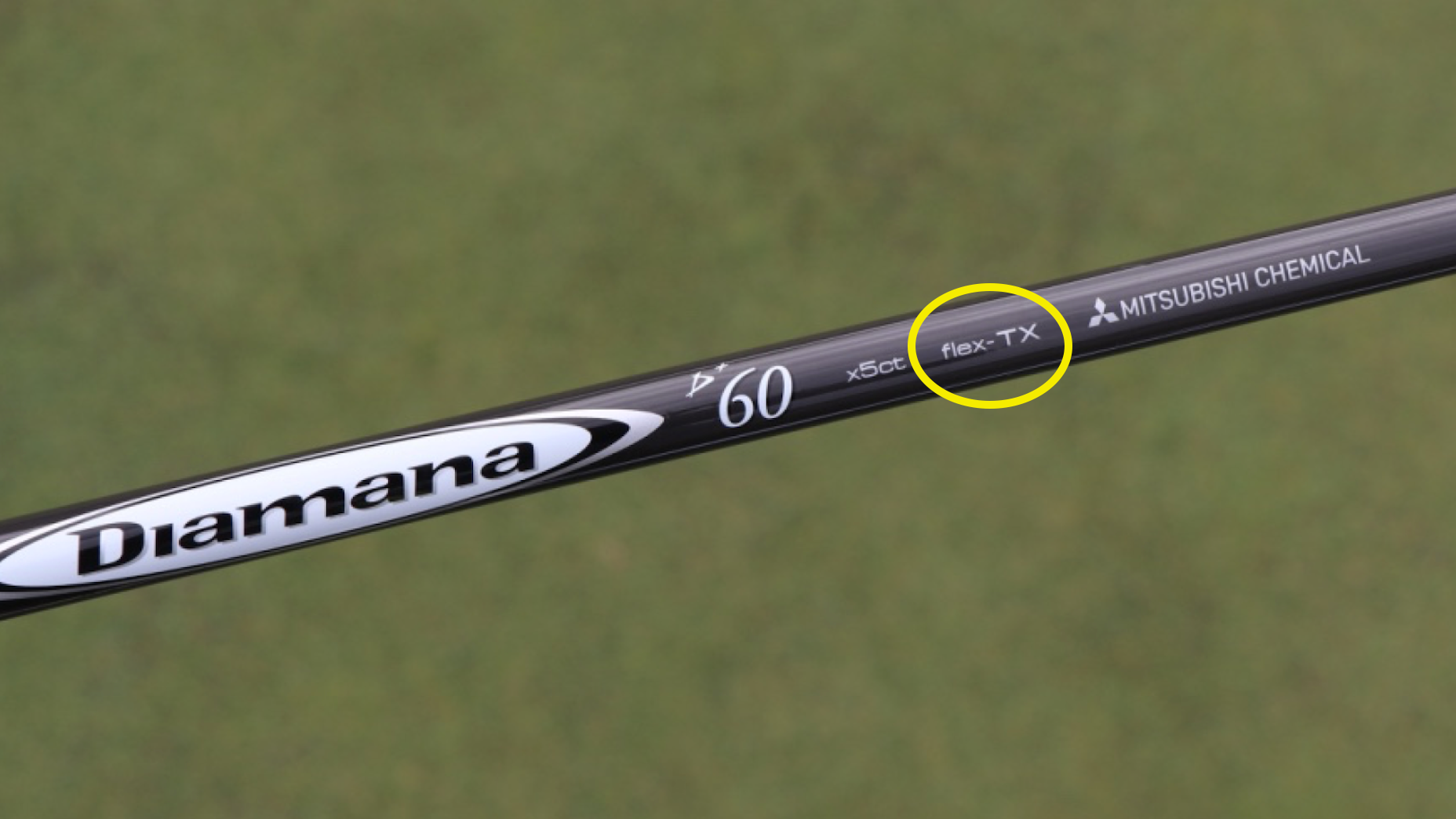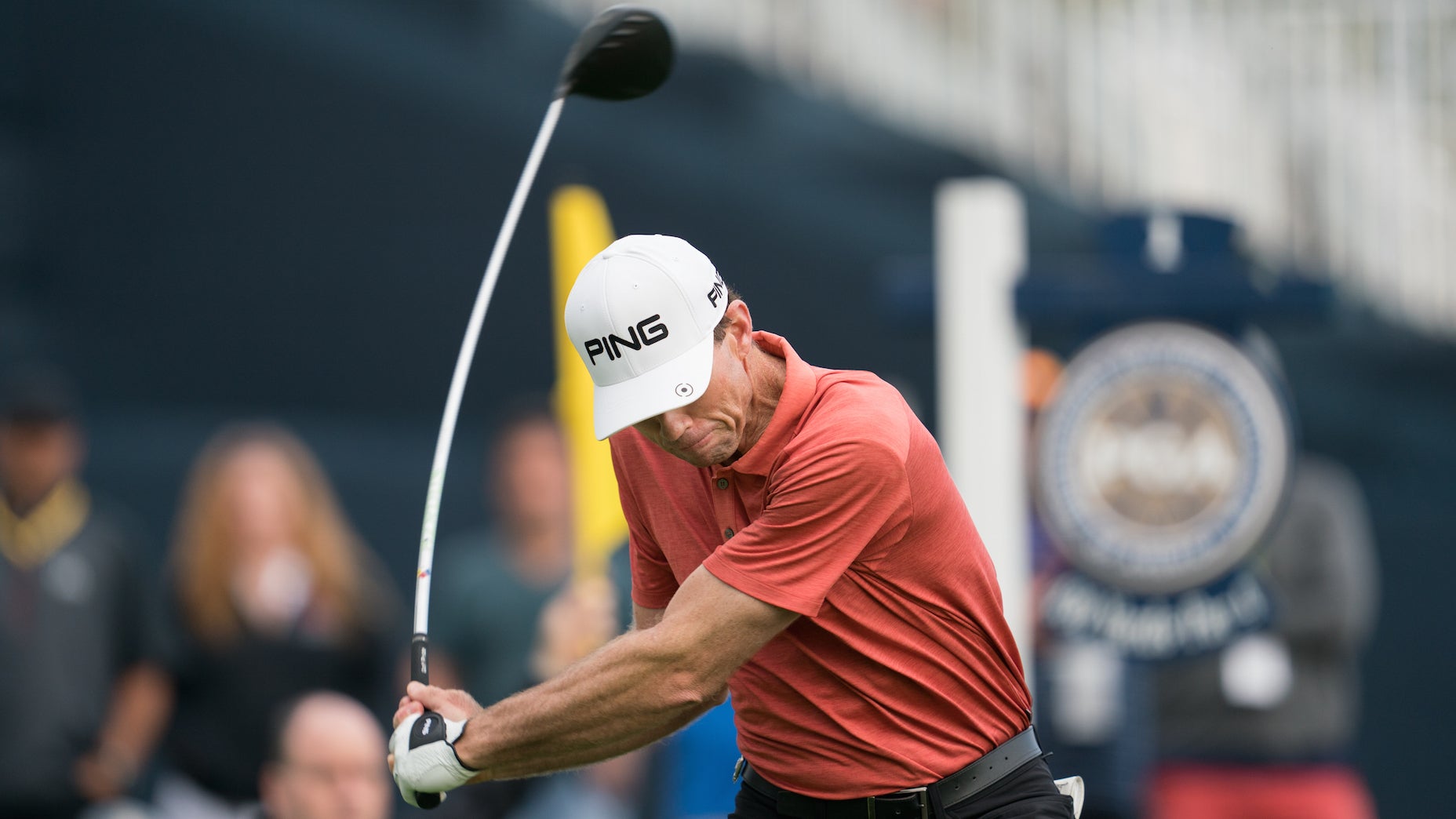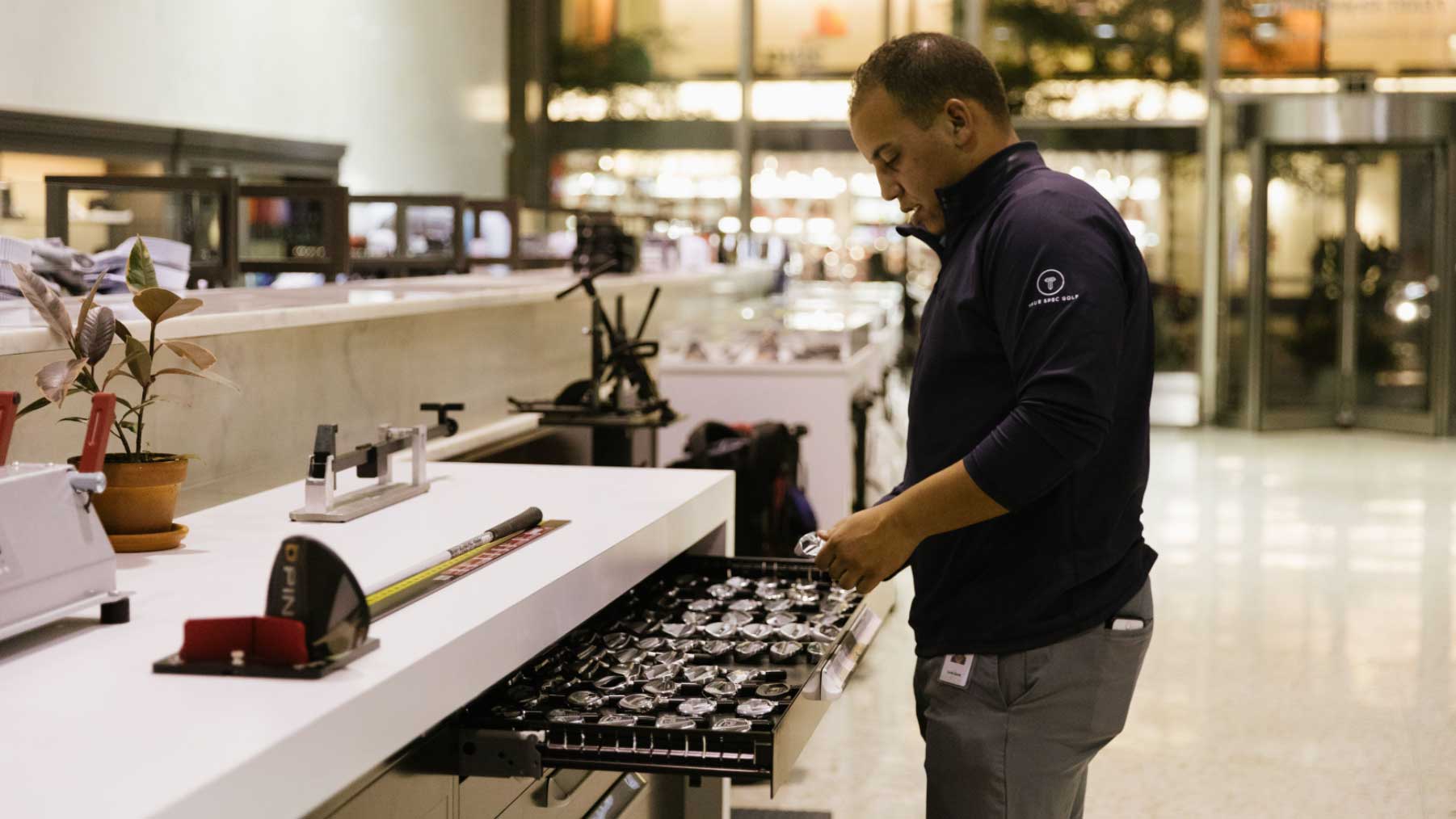Why your ego might be hurting your game when it comes to buying equipment
- Share on Facebook
- Share on Twitter
- Share by Email

If you don't have similar swing speed and delivery to Tiger Woods, then using the same TX flex as him may be hurting your game.
Andrew Tursky
Welcome to the first installment of Fit Factor, a new GOLF.com series in which we’ll shine a light on the importance of club fitting, powered by insights, data and other learnings from the experts at our sister company, True Spec Golf. First up: Why when it comes time to buying new gear, it’s best to check your pride at the door.
***
Ego is a weird thing for golfers, isn’t it? Sometimes we think we can easily reach that 650-yard par-5 in two, and other times we’re unsure we can even make contact with the ball. Most of the time, for golfers at least, it’s best to know the likely outcomes so we can properly prepare. For instance, if you think your 9-iron flies 165 yards and your actual average carry with your 9-iron is 140 yards, that’s going to be a serious problem when you’re playing a par-3 over water or bunkers.
Having self-awareness is also crucial when it comes to buying golf equipment, according to Tim Briand, who is the senior vice president of True Spec Golf and is the fitter for multiple PGA Tour players.
“Know who you are,” Briand says. “Check your ego at the front. Your handicap is going to tell you who you are … When choosing what equipment to play, make sure you select components, specifically clubheads, that are in your swim lane. Don’t try to play something aspirational that’s too difficult for you to hit.”
Dial back your ego, dial up your drives
start shoppingIf we overestimate our ability as golfers, it could lead us down the wrong path. The most common areas that an inflated ego tends to impact equipment choices are, 1) playing shafts that are too stiff and/or heavy, 2) not using enough loft on drivers and fairway woods, 3) using irons that don’t offer enough forgiveness, 4) using wedges with not enough bounce and too much loft, and 5) using putters that aren’t forgiving enough.
4 ways to gain big distance, according to Ping fitting expert and PGA Tour player Marty JertsonBy: Andrew Tursky
Sometimes, golfers make those mistakes because they’re simply mimicking the equipment that PGA Tour players use. Briand warns against going down that road.
“If your delivery patterns are similar to pros, then play the equipment the pros play,” Briand says. “At the end of the day, I want to fit into a 32-inch pair of jeans like all the supermodels wear, but I’m going to look pretty silly if I put on a pair of 32-inch jeans. You are who you are. You’re going to do way better off in the long run from a performance standpoint if you just own that. Own that and play the products that are conducive to who you are, instead of trying to make something work.”
How a club-fitting saved my golf game (and how it might save yours): 30-Day ChallengeBy: James Colgan
The problem with using clubs and shafts that don’t match up with your swing, as Briand explains, is that your swing evolves around that product over time. If the product is, for example, a driver shaft that’s too stiff, you may struggle hitting the ball high enough. In response, you start trying to help the ball in the air. Then, your swing begins to transform because you’ve been hitting a driver shaft that’s too stiff over and over again.
“Is that evolution of your swing going toward preferred mechanics or away from preferred mechanics?” Briand asks. “In most cases, those compensations you’re making because of that poorly fit golf club are taking you away from the swings that you really want to make.”
Of course, it can work the other way, too. Being that golfers do tend to have fragile egos, they could be using shafts that are too weak for their higher swing speed, or use irons that don’t provide ample feedback on mishits to make improvements. That’s why club fitting can have such a positive impact on not only your current game but also future performance and development.
Fitting, especially when there’s quantitative launch monitor data, helps golfers see the truth about what golf clubs they really need to use, and get those proper clubs in their hands before it’s too late.
For more on the latest gear news and information, check out our latest Fully Equipped podcast in the Spotify embed below!
Explore the Pro Shop
Latest In Gear

Andrew Tursky
Golf.com Editor
Andrew Tursky is the Senior Equipment Editor at GOLF Magazine and GOLF.com.

















